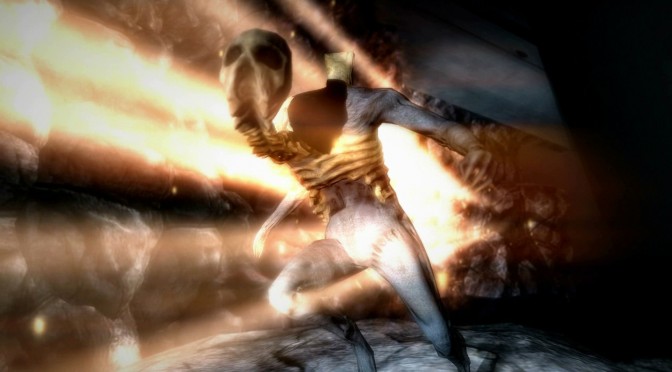Vogelsap has announced that its first-person asymmetrical multiplayer horror game, The Flock, will hit Steam and The Humble Store on August 21st for $16.99 USD/EUR, thus beginning its limited life span governed by the actual in-game deaths of its players.
Gamers who pre-order The Flock on either the Humble Store or Vogelsap’s website, or buy the game during the launch week on Steam or the previously two mentioned online stores, will receive an extra buddy-key so a friend can share in this unprecedented gaming event. Moreover, all gameplay related DLC will come free of charge.
When the game launches, the Flock’s population counter will be set at 215,358,979. With every in-game death of a member of the Flock, the population counter will tick down by one. When the total reaches zero the game will no longer be for sale on Steam and only those who already own The Flock will be able to take part in the next phase of the game. This last phase will come to an end with an unannounced climactic finale. The only reason Vogelsap would adjust the population counter would be if they release The Flock for consoles.
Jeroen van Hasselt, creative director at Vogelsap, said:
“We’ve asked ourselves what kind of experience people would be getting from The Flock years after release. Hardly anyone would be online and those still playing would be either great at the game or brand new. That’s not a fun player-experience. So we think it’s worth sacrificing that possibility in order to try and improve the experience for most players when they are actually playing the game.”
While the story of most multiplayer only games places players in the middle of an unending conflict, the nature of The Flock’s population counter and subsequent finale ensures it will have an end. This may raise several concerns and questions, many of those can be answered via the developers FAQ, which can be found HERE!
The Flock takes place in the year 3000 on a post-apocalyptic Earth where pollution has not only prevented sunlight from reaching the surface of the planet, but also led to the extinction of humanity. The planet’s new dominant species is the Flock, a hideous race of skeletal beasts that prowl mankind’s ruins. The Flock are thriving until the appearance of a mysterious Light Artifact that not only draws them to its illumination, but also transforms them upon touching it into a humanoid being known as the Carrier.
The Light Artifact itself is the byproduct of a last ditch effort by humanity to save itself. With earth’s environment in ruins, the planet’s brightest minds brainstormed a way to simulate sunlight below the smog cover, in order to sustain life. Though the device was completed, it was too late to save mankind. So, humanity set the Light Artifact to reappear in the year 3,000, in case a life form emerged that might be able to use it.
When controlling members of the monstrous Flock, players must use their inhuman agility and devilish tricks to get the drop on the Carrier. When in command of The Carrier, players must stay alert and be ready to use their only weapon, the illumination of the Light Artifact, to kill any Flock lurking in the shadows.
When a member of the Flock successfully lunges at the Carrier, it seizes control of the Light Artifact and becomes the new humanoid hunted. The previous Carrier then respawns as a member of the Flock just arriving at the scene.
The only way to win a match of The Flock is to survive as the Carrier while keeping the light lit or capturing objectives. Objectives can be taken by directing the artifact’s light towards these key points.

John is the founder and Editor in Chief at DSOGaming. He is a PC gaming fan and highly supports the modding and indie communities. Before creating DSOGaming, John worked on numerous gaming websites. While he is a die-hard PC gamer, his gaming roots can be found on consoles. John loved – and still does – the 16-bit consoles, and considers SNES to be one of the best consoles. Still, the PC platform won him over consoles. That was mainly due to 3DFX and its iconic dedicated 3D accelerator graphics card, Voodoo 2. John has also written a higher degree thesis on the “The Evolution of PC graphics cards.”
Contact: Email

